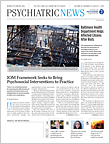Nearly one-third of adults living in the United States will experience alcohol use disorder (AUD) over the course of their lives, but only 20 percent will seek treatment, according to a recent study in JAMA Psychiatry. The findings take into consideration updates in the diagnostic classification of alcohol addiction that were published in DSM-5 and offer the first nationally representative information on prevalence and comorbidity.
To evaluate rates of AUD in accordance with DSM-5 criteria, researchers at the National Institute on Alcohol Abuse and Alcoholism (NIAAA) analyzed data collected as part of the 2012-2013 National Epidemiologic Survey on Alcohol and Related Conditions III (NESARC-III)—a survey on the co-occurrence of alcohol use, drug use, and related psychiatric conditions.
Since the NIAAA began collecting data through NESARC more than a decade ago, alcohol-related disorders were surveyed in accordance with DSM-IV criteria. Although there is considerable overlap between DSM-IV and DSM-5 diagnostic criteria, there are several differences. For example, while DSM-IV classified alcohol abuse and alcohol dependence as two distinct disorders, with specific criteria for each, DSM-5 integrates alcohol abuse and alcohol dependence into a single disorder with mild, moderate, and severe subclassifications and the addition of cravings to the criteria set.
“In the view of the seriousness of AUDs, current epidemiologic data are needed,” the study authors noted.
In the current study, the researchers conducted face-to-face interviews with 36,309 adults aged 18 and older from April 2012 to June 2013 to evaluate rates of AUD in accordance with DSM-5 criteria. The researchers also assessed the participants using DSM-IV diagnostic criteria so they could examine changes in AUD prevalence over the decade.
The researchers found that 12-month prevalence of AUD under DSM-5 criteria was 13.9 percent (representing 32.6 million adults) and lifetime prevalence was 29.1 percent (representing 68.5 million adults). Only 19.8 percent of adults with lifetime AUD sought treatment for the condition, while 7.7 percent of those with 12-month AUD sought treatment. AUD rates were found to be greater among men than women, and among younger survey responders.
According to DSM-IV criteria, 12.7 percent of NESARC-III participants met criteria for AUD in the 12-months prior to being surveyed and 43.6 percent met criteria for lifetime AUD. By comparison, NESARC-III participants in 2001 through 2002 reported past-year and lifetime DSM-IV rates of 8.5 percent and 30.3 percent, respectively. The researchers speculated that the past decade increase may reflect increases in recent heavy alcohol consumption, but noted that additional research is needed to address these findings.
Comorbid mental disorders associated with AUD included substance use disorder, major depressive disorder, bipolar I disorder, and antisocial and borderline personality disorders. Posttraumatic stress disorder was associated only with lifetime AUD.
“These findings underscore that alcohol problems are deeply entrenched and significantly undertreated in our society,” said NIAAA Director George Koob, Ph.D., in a press statement. “The new data should provide further impetus for scientists, clinicians, and policymakers to bring AUD treatment into the mainstream of medical practice.”
“Alcohol use disorder affects millions of people,” Erin Zerbo, M.D., an assistant professor of psychiatry at Rutgers New Jersey Medical School, told Psychiatric News.
Though many factors likely keep people from seeking treatment for AUD, Zerbo said she suspects stigma acts as a major barrier.
“Given the extensive morbidity that has been associated with AUD—including medical complications, motor vehicle accidents, and violence—physicians should be at the forefront in helping to destigmatize addiction, since it is known that AUD is an often treatable medical condition,” Zerbo said. “We are not only in need of new science to better treat AUD, we need better access to care, destigmatization of treatment for addiction, and a better awareness of addiction among all practitioners.” ■
“Epidemiology of DSM-5 Alcohol Use Disorder: Results From the National Epidemiological Survey of Alcohol and Related Conditions III” can be accessed
here.

